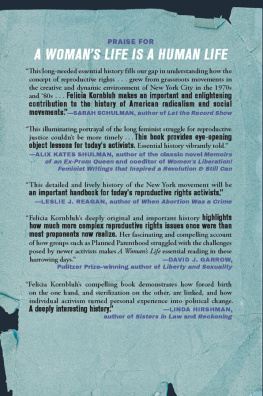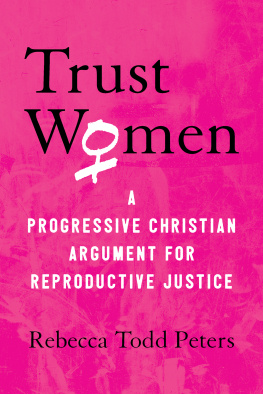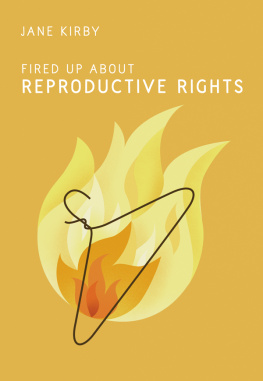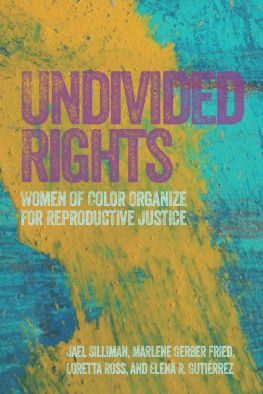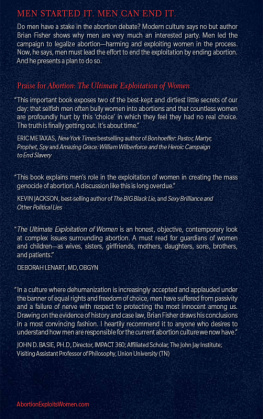Thank you for buying this ebook, published by NYU Press.
Sign up for our e-newsletters to receive information about forthcoming books, special discounts, and more!
Sign Up!
About NYU Press
A publisher of original scholarship since its founding in 1916, New York University Press Produces more than 100 new books each year, with a backlist of 3,000 titles in print. Working across the humanities and social sciences, NYU Press has award-winning lists in sociology, law, cultural and American studies, religion, American history, anthropology, politics, criminology, media and communication, literary studies, and psychology.
Acknowledgments
I could never have completed the dissertation that served as the basis for this book without the invaluable help of Alice Kessler-Harris, my dissertation advisor. She encouraged me when I wasnt sure I could get all the pieces of the story to fit together in a coherent manner, and she sent me back to the computer screen when she believed I could do better. I also received very useful comments and advice from the other members of my dissertation committee: Dee Garrison, Cynthia Daniels, and James Reed. Portions of the manuscript were read and commented on at various stages by other Rutgers history department faculty: Nancy Newitt, Virginia Yans, Phyllis Mack, and Jackson Lears. I also received support and encouragement during my coursework at Rutgers, particularly from Professors Jennifer Jones and Deborah White. I thank these people for all their help and for the lively womens history community they have created at Rutgers. Several of my graduate student peers, including Jennifer Milligan, Beatrix Hoffman, Amy Forbes, Rebecca Hartman, and Rebecca Gershenson, gave of their time in reading and critiquing chapters and provided much needed friendship and companionship. Rutgers departmental fellowships assisted me with financial support to complete my research and writing. A Rockefeller Archive Center Research Grant and an American Historical Association Albert J. Beveridge Research Grant helped fund valuable research trips.
My readers at NYU Press, including Rickie Solinger and Loretta Ross, supplied excellent suggestions for revisions as I completed the arduous task of turning a Ph.D. dissertation into a book manuscript. Jennifer Hammer, editor at NYU Press, read and reread the manuscript with a keen eye for detail in the final stages of revision.
Grateful acknowledgment is given to Indiana University Press for permission to reprint my chapter on abortion and the Young Lords that originally appeared in the Journal of Womens History 13, no. 1 (2001).
Of course, this book could not have been written without the help I received from the women who spoke with me about their experiences in the womens liberation and reproductive rights movement. I thank them for their commitment to getting their stories told.
I also want to thank Michael Harper of the Creative Writing Department at Brown University for recognizing my potential as a student and a scholar and for stressing the importance of history.
Finally, I thank my father, Jerold Nelson, for always encouraging me in every worthwhile endeavor I undertake.
About the Author
Jennifer Nelson is Director of the Sarah Isom Center for Women at the University of Mississippi. She completed her Ph.D. in U.S. and womens history at Rutgers University in 1999. Her undergraduate degree in semiotics is from Brown University.
1
Lets hear it from the real experts Feminism and the Early Abortion Rights Movement
On February 13, 1969, seven women from a radical feminist organization called Redstockings disrupted the first New York State legislative hearings on abortion law reform. The radical feminists were incensed to hear that 14 men but only one womana nunwere scheduled to testify before the legislative committee. During the disruption, Kathie Sarachild, one of the most provocative participants in the Redstockings action and a founder of the group, shouted, It is wrong for men of great age to decide this matter [abortion law reform]. And if we have to, we will force doctors at gun point, and we might even hijack airplanes to get this. Senator Seymour Thaler, a Queens Democrat, responded, I would bet that all those ladies [the demonstrators] are mentally disturbed and shouldnt be allowed to have a baby. To which another radical feminist retorted, The only way these people will listen to us is if we disrupt their meeting.
On this point, the Redstockings were probably correct. The New York State legislators had no plans to include women in the abortion law debate. Redstockings, however, intended to challenge a cultural and political structure that excluded their voices and opinions, particularly on topics that concerned women centrally. Fortunately, for the Redstockings, the New York media and much of the nation was listening, some, with rapt curiosity at the oddity that radical feminism posed, others, with a mind to further build womens liberation nationwide. The disruption of the legislative hearings was just one feminist action among many that had grabbed media attention in recent months. By 1968, womens liberation had become part of the explosive political turmoil that had begun to sweep the nation and gather attention in major newspapers, magazines, and on television: the civil rights movement, the anti-war movement, Black Power, and the student protests all were transforming the way Americans thought about society and themselves.
I focus on Redstockings in this chapter because more than any other New York womens liberation organization they made the right to legal abortion central to their feminist struggle for womens autonomy. Why did Redstockings identify abortion rights as the key to womens emancipation? Certainly, other issues were important and were quickly taken up by other feminist groups: equality in the workplace, sexual harassment, sexism in educational institutions, and womens representation in the media, just to name a few important second wave topics. Part of the answer to this question can be found in a better understanding of Red-stockings members self-definition as radical feminists. They were not interested in fighting sexism through traditional political and institutional channels. They left these tasks to what feminist theorists refer to as liberal feminists, represented by organizations such the National Organization for Women (NOW). Redstockings members believed that womens most fundamental subordination occurred in what has often been conceived by womens historians as the private sphere. Redstockings argued that only by addressing womens oppression at its rootsin the family, in regards to womens bodies, and in regards to womens control over their reproductioncould feminists begin to eradicate sexism in the public sphere, the workplace, schools, the media, etc.
The other part of the explanation for Redstockings focus on abortion and body politics has to do with their decision to make a clean break from what they considered to be the sexist white male New Left. By leaving the New Left, the activists who would eventually constitute Redstockings, chose to make womens personal and private problems into political demands. They believed that womens liberation should focus singularly on womennot on the Vietnam War, not on civil rights, and not on student power. Issues that concerned the female body quickly moved to the center of this political agenda.
Second wave feminists captured their commitment to making womens personal problems into public political issues in the banner phrase, The personal is political. This contention is one of the most important legacies of womens liberation and second wave feminism. By making the personal political, womens liberation activists radically changed American political culture. Issues once confined to the domestic sphere or concerning the body were redefined as subjects for political discussion. Feminists not only brought the domestic into politics, but they also brought politics into the home. Challenging the sexual division of labor in the household or negotiating power in the bedroom was considered a feminist political act.
Next page

